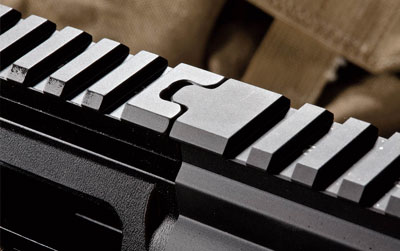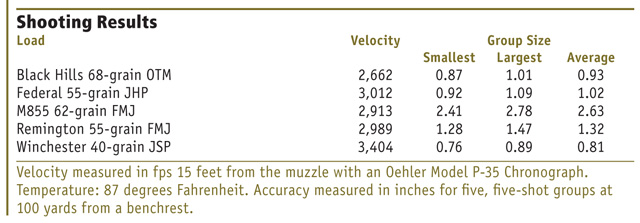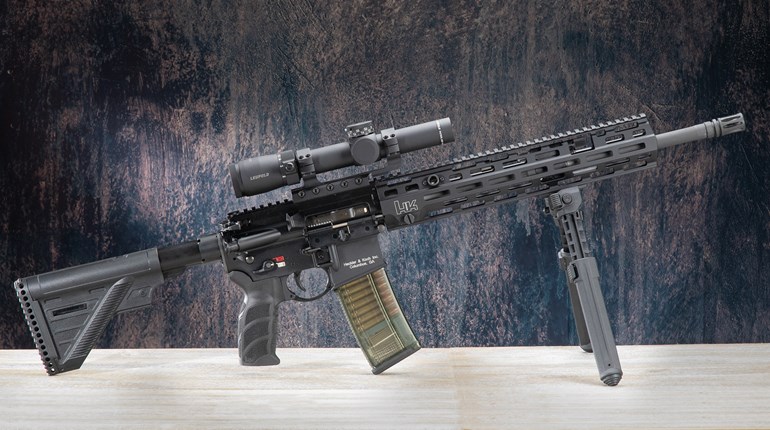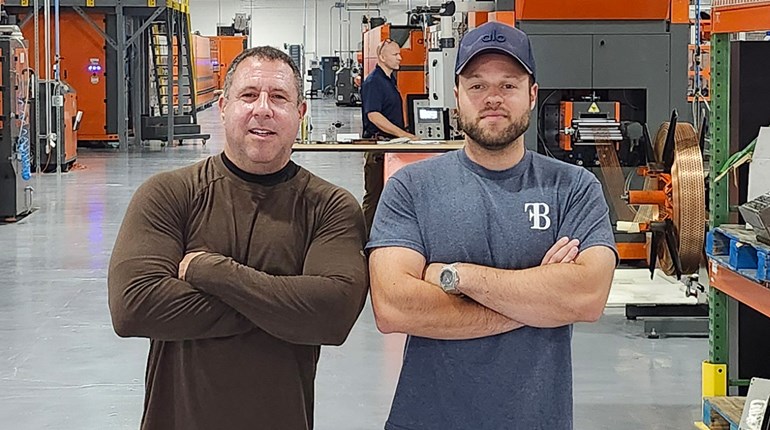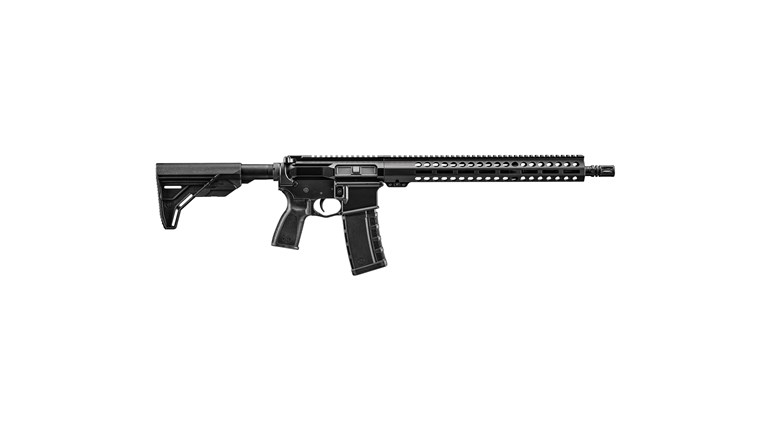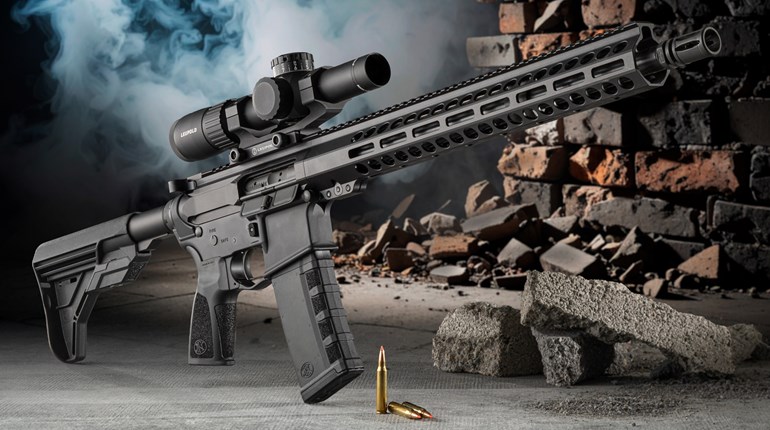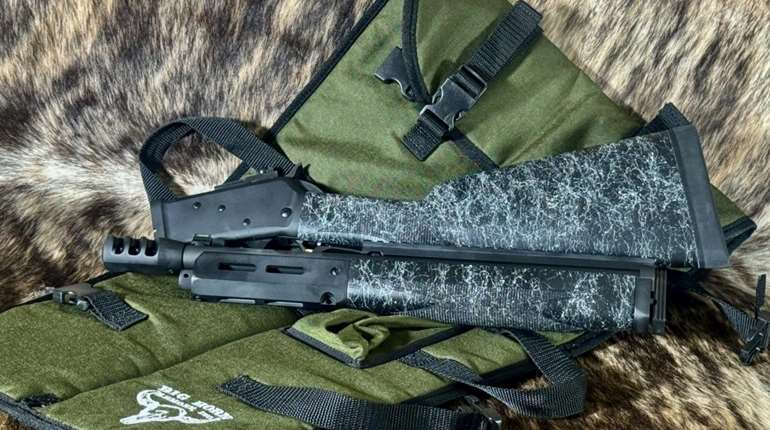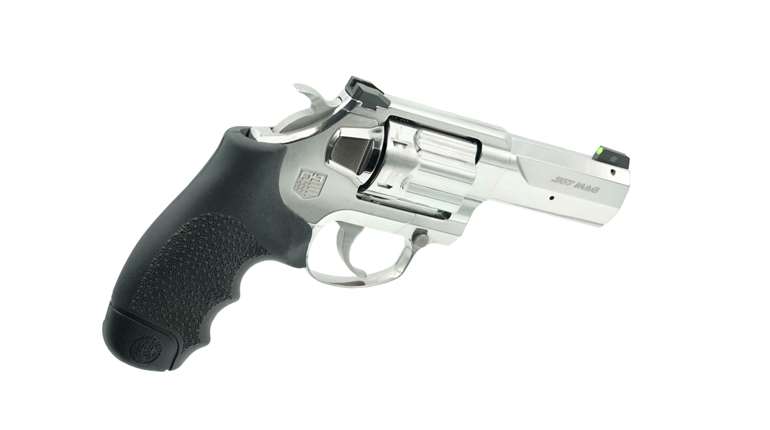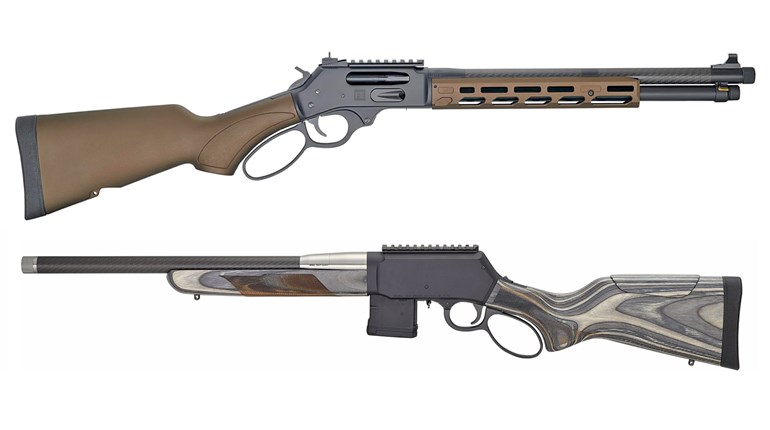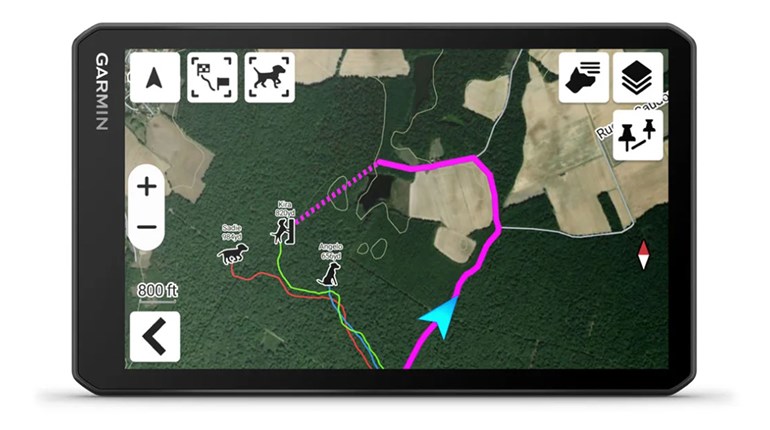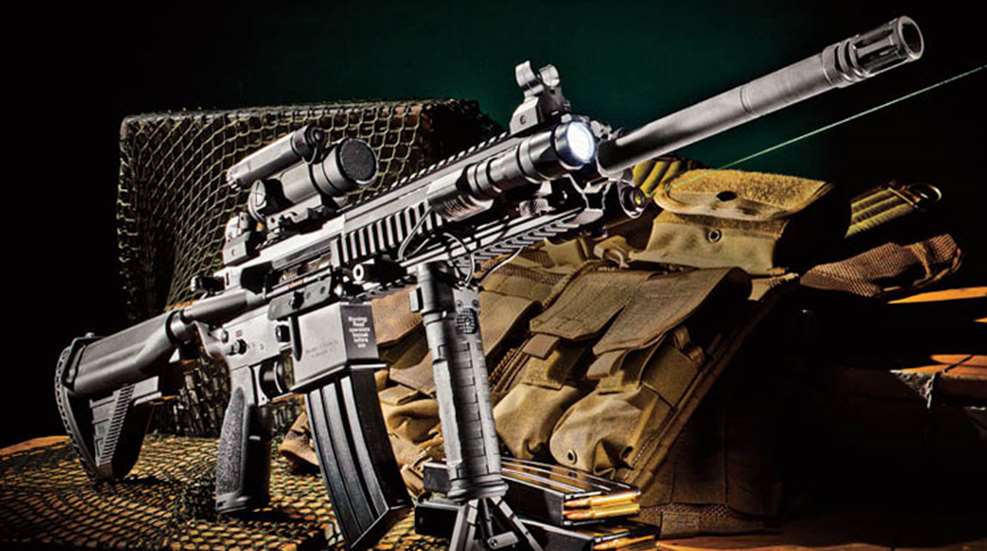
It was, I think, during the 2005 SHOT Show that I first fired the initial version of Heckler & Koch's selective-fire HK416 variant of the M4 Carbine. One of the early iterations of the M16 platform to employ a short-stroke piston operating system, that model had changed significantly a year later, and again a year or so after that. All future improved variations, however, would share the short-stroke piston with Heckler & Koch never showing a model operated by Eugene Stoner's original direct-gas-impingement system of operation.
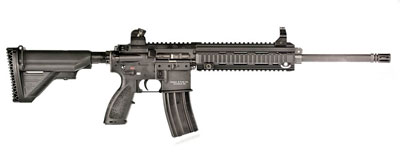
Fast forward to 2010, and the latest version of the HK416 was firmly implanted with the U.S. Navy SEALs as its weapon of choice. The HK416 remains standard issue with the SEALs, and was, according to all reports, the weapon used to dispatch radical Islamic terrorist leader Osama bin Laden.
For several years, a commercial semi-automatic-only variation of the HK416 has been "coming." Now this made-in-America rifle has finally arrived to join the several dozen piston-operated competitors. Called the MR556A1 (MR for match rifle), this newest AR-type carbine looks, at first glance, like most others of the ilk, but is quite unique.
Appearing to have been designed in an effort to please the present and future requirements to own such a firearm, the MR556A1 is geared for the commercial market with everything from its name to its accent on safety—and Heckler & Koch is quite serious about both—with Swiss-watch quality being the bottom line.
Equipped with a M16A2-type flash hider/muzzle protector at the end of its 16-inch heavy barrel, the MR556A1 has no M203 mounting cut and no bayonet lug. While I have nothing against these features if they are present, I have no practical use for them.
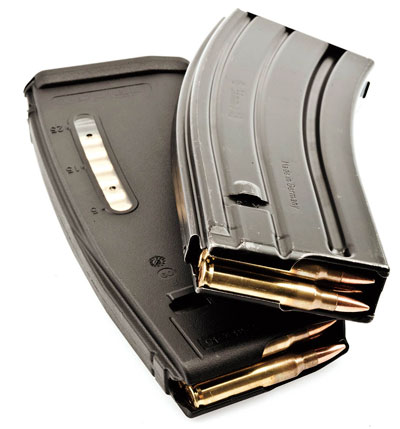
The MR556A1's alloy handguard is a one-piece, free-floating affair surrounding the barrel and appears to have begun life as an extrusion. Equipped with four 1913 rails, it comes with a fixed front sight mounted on top and a crossbolt near the bottom rear. The front of this one-piece rail is totally open, revealing the slightly protruding gas block. The gas block is closed with no gas-cylinder plug. A rounded portion with two notches and a small horizontal hole is for placement of a folding front sight.
On the bottom handguard rail, a cutout section exposes the bottom of the gas block, through which there is a lateral hole roughly .5 inch in diameter. This leftover from the rifle's lineage was for placement of a grenade launcher.
At the rear of the handguard's top rail is a small tongue that extends into a matching cutout on the front of the upper receiver's flat top to serve as a locator when the handguard is assembled. This precise fit prevents any movement between the handguard and top receiver rail.
The MR5561's upper receiver is essentially conventional, with some subtle differences from a standard M4 version. A standard-type case deflector and forward assist are used along with the magazine and bolt release, but a synthetic dustcover is noticeable, as is the ambidextrous safety/selector. The Heckler & Koch safety is unlike other AR safeties—it can be put "on" with the hammer down. This means all administrative functions can be done with the safety on, making it a very excellent system.
To make magazine insertion faster, the mouth of the magazine well is much larger than that of an M4. At the rear of the flattop rail is a standard Heckler & Koch drum-type rear sight with four apertures, and behind that is an M4-style charging handle with an extended latch for enhanced purchase when charging the rifle. The finely stippled pistol grip is of Heckler & Koch's design and contains a waterproof storage compartment for batteries and small parts. Receiver markings are typically Heckler & Koch. The buttstock is also the company's design, with an aggressive, non-slip butt along with multiple positions for length of pull and three sling mounts.
Unique Combination Spring
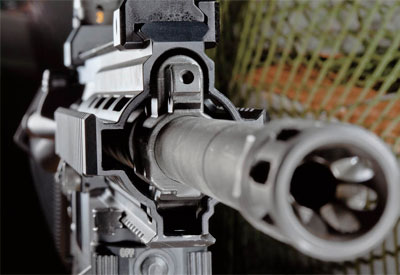
On the inside, the MR556A1 is also somewhat unique. For the most part, the bolt group is similar to other short-stroke piston ARs, but it has its own special touches. The operating-rod contact is integral to the bolt carrier and has an indentation in the center to help align the rod. The carrier also has an enlarged portion at its rear to offset tilting common in AR piston conversions (and all piston-operated AR platforms are conversions of Stoner's original design).
A difference in the bolt group is a coil spring that exerts forward force on the bolt and rearward pressure on the firing pin. While the manual mentions this spring only as a firing-pin spring, it also serves to push the bolt forward when it is out of battery and moving to the rear. This tends to keep the bolt forward, with the cam pin vertical in the first fraction of an inch of travel after the bolt is unlocked.
An unaltered direct-gas-impingement system—as originally designed by Stoner—relies on gas expanding inside the carrier forcing it to the rear and the bolt forward during the first stage of travel, and the pressure continues until the head of the cam pin (then vertical) passes by its resting recess in the upper receiver. By the time it clears that enlarged area and is in line with the channel in the upper receiver, the pressure in the carrier has exhausted. Still, contact between the square head on the cam pin with the upper receiver can be seen even in a standard AR-15.
In a typical AR piston conversion, there is nothing to keep the bolt forward during the initial opening, and it can tend to bounce or move back in its track at the instant of opening. This is more prevalent in short gas systems, where more residual gas is often still present in the barrel. Pushing the bolt back at this instant can lead it to rotate to the left and return the head of the cam pin to its resting position. Doing so can cause the head to strike that portion of the upper receiver. Again, some contact in this area is normal and is visible on virtually all AR-15/M16 platform rifles.
If the Heckler & Koch bolt/firing spring is slightly different, another aspect of the bolt carrier is unique, and that is its firing-pin block. Amounting to a drop safety, this system uses a pivoting lever similar to that invented by Devel Corp. for its 1911s in the early 1980s. In the MR556A1, this lever moves vertically in a longitudinal slot against a coil spring on top of the carrier. When the hammer is not in contact with the firing pin, the rear of the lever pivots down where part of it blocks the firing pin from moving forward, but the tail of the lever extends back beyond the head of the firing pin.
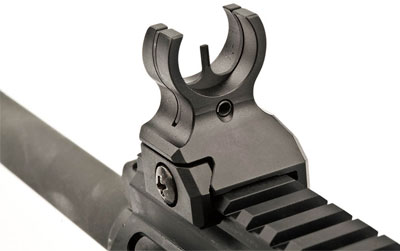
When the trigger is pulled, the hammer moves forward and cams the tail of the lever up, unblocking the firing pin and allowing it to move forward a millisecond later when the hammer strikes it. It's likely Heckler & Koch incorporated this firing-pin-drop safety block in the commercial MR556A1 to make it legal in the states requiring such a device. The extractor, ejector and their associated pins and springs appear to be interchangeable with those of a standard AR-15.
Disassembly
To open or separate the MR556A1 upper- and lower-receiver groups, a special tool must be used, which is stored under the rubber buttplate. Rotate the buttplate a quarter turn to the left and remove it to expose the small L-shaped tool. With the buttplate removed, access is also gained to two battery-storage tubes and another storage area. No metric hex wrench is furnished to remove the handguard bolt.
Both receiver pins have a spring-loaded center plunger that lock the pin in place. Use the small end of the tool to push in the center of the rear-receiver pin to unlock it and keep pushing. The unlocked pin will move all the way to the right until it stops. The upper receiver is then free to pivot open on the front receiver pin. If the upper receiver needs to be completely removed, repeat this step with the front pin.
Once the upper receiver is open, the charging handle and bolt group can be removed by pulling the charging handle to the rear, pulling out the bolt group and then pulling back and straight down on the charging handle to free it from its channel in the upper receiver.
Either the furnished tool or the point of a bullet can then be used to push out the firing pin retaining pin in the bolt carrier from right to left. Then, after lifting up the tail of the drop-safety lever on top of the carrier, the firing pin will move rearward under the force of the combination firing pin/bolt spring. Once the firing pin has been removed, rotate the cam pin 90 degrees and remove it from the top of the carrier while pushing the bolt back into the carrier. With the cam pin removed, the bolt will slide out the front of the carrier followed by the firing pin/bolt spring. Using the MR556A1's tool or the point of a bullet to remove the extractor pin will allow the extractor and its spring to be removed.
With a metric hex wrench, unscrew the handguard retaining bolt on the right side of the handguard just forward of the receiver, and pull the bolt out to the right until it stops. Then remove the entire one-piece handguard from the front. This will expose the short-stroke piston group above the barrel. Pull back on the operating rod enough to remove the rod from the piston while holding the piston with the other hand, and tilt the rod enough to remove it and its return spring from the front of the receiver. Then pull out the piston for cleaning if necessary. No further disassembly is normally required.
Downrange
The MR556A1's trigger is very good right from the factory with only a slight bit of creep that will smooth out with use. The MR556A1 also comes with one Heckler & Koch 30-round magazine, but will accept the standard-issue 20- and 30-round magazines and some others, but not all. This is because Heckler & Koch AR-platform rifles use a magazine well made to European specifications—tighter than those of the original AR-15.
Because of slightly closer magazine well dimensions, Heckler & Koch rifles will not accept the Magpul PMag or the excellent IK-520 40-round magazine and some other polymer magazines. The MR556A1, however, will accept Magpul's equally excellent EMag.
Notably stronger than an AR-type rifle, the MR556A1's recoil spring is apparently designed to withstand the heavier impingement from its piston, and requires more force to pull back the charging handle. Heckler & Koch's own special buffer is used in the rifle, yet another indication of the difference in direct-gas-impingement and short-stroke-piston operation.
Shooting the MR556A1 was pleasurable, largely due to its good trigger and excellent stock with a non-slip rubber buttplate. The EMag functioned perfectly.
Accuracy was superb with commercial .223 Rem. ammunition, hovering about 1 MOA or less at 100 yards, and was even good with M855 5.56 NATO ball ammo. No malfunctions of any kind occurred. A Browe 4x32 mm Combat Optic was used during accuracy testing.
The Heckler & Koch MR556A1 will no doubt become a benchmark in AR-type rifles in general and short-stroke-piston ARs in particular. It will be right at home in competition, as a high-precision patrol carbine or as a prized collector's item.
Manufacturer: Heckler & Koch; (706) 568-1906, www.hk-usa.com
Action Type: Gas-piston-operated, semi-automatic
Caliber: 5.56 NATO
Capacity: 20 and 30 rounds
Barrel: 16.5 inches
Rifling: 6 grooves; 1:7-inch RH twist
Finish: Matte black
Stock: Collapsible
Sights: Elevation-adjustable front post, protected diopter windage and elevation adjustable rear
Trigger Pull Weight: 7 pounds, 3 ounces
Length: 37 inches extended; 33.9 inches with the stock collapsed
Weight: 8.9 pounds
Accessories: HK multi-tool, lock, case, manual
MSRP: $3,295
Don't miss a moment of the action. Subscribe to Shooting Illustrated today!
